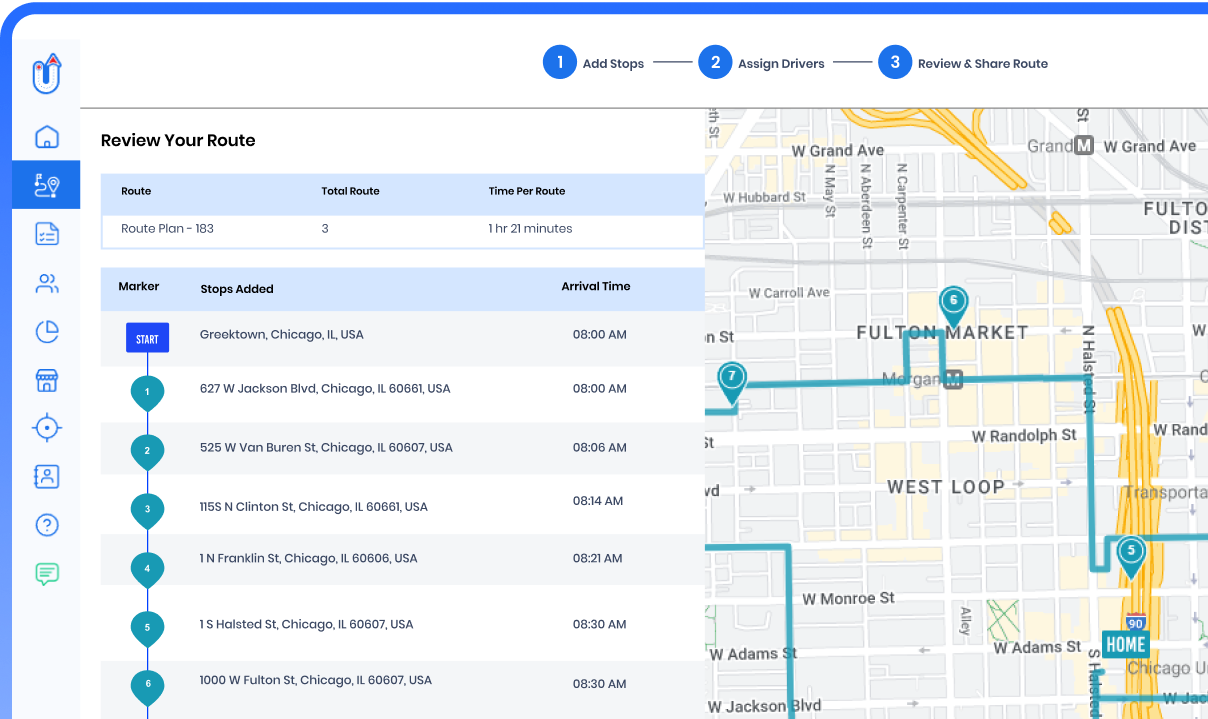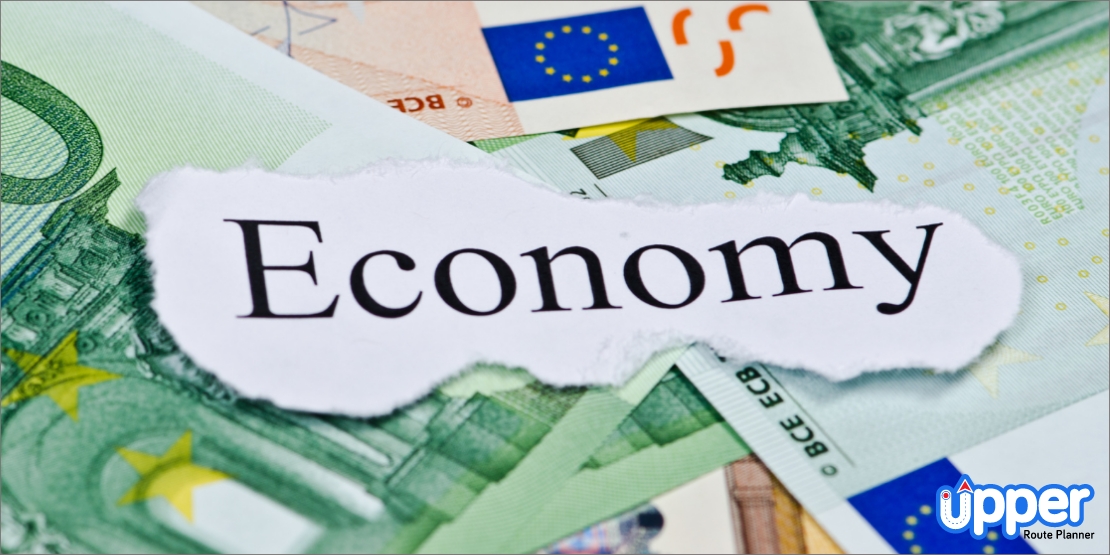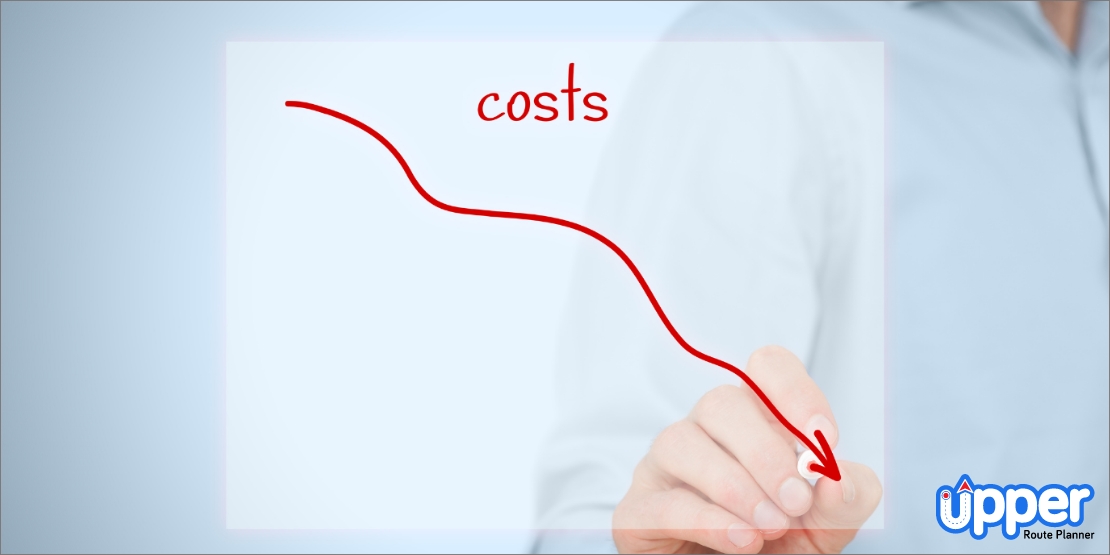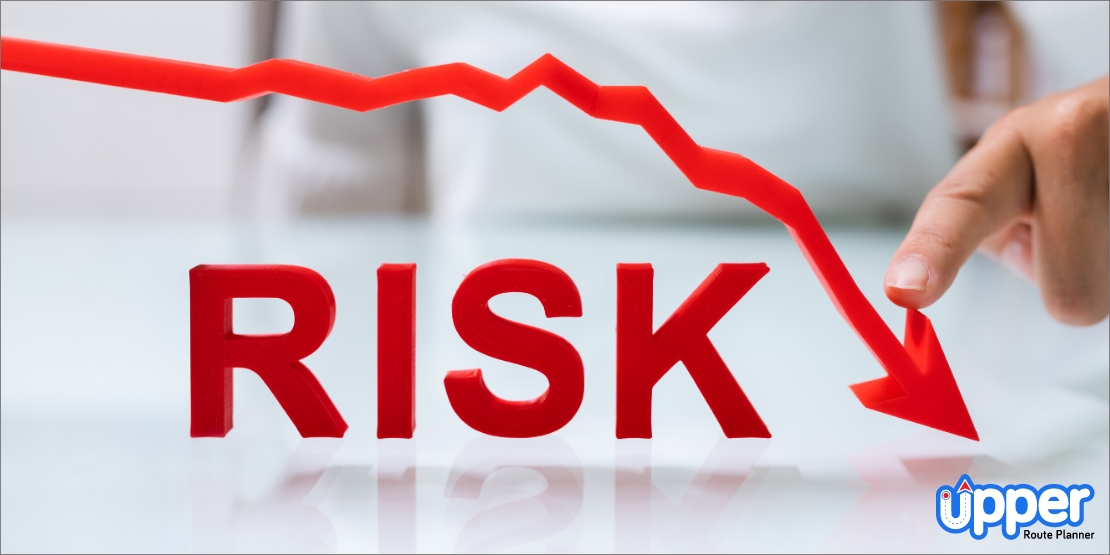

While we all know about logistics and worldwide supply chain management, reverse logistics (at least the term) remains elusive to most. Simply put, reverse logistics is about taking the product from customers and bringing it back to the manufacturers through the supply chain network.
Mostly, reverse logistics is relevant for eCommerce companies with easy return policies, like Amazon. According to the Reverse Logistics Association, return rates for e-commerce purchases are three to four times higher than those for in-store purchases. In fact, Amazon leads the reverse logistics industry with around 13% market share.
Here is everything you need to know about the reverse logistics industry to make it easier for you to get into this industry.
Forget Spaghetti Routes, Optimize Routes for Your Entire Team with Upper

Table of Content
Effective reverse logistics is that part of the supply chain management that transports the goods and products from the customers to the point of origin which is manufacturers. Some of the reverse logistics examples are return, reuse, refurbish, repair, and recycling. Usually, reverse logistics comes into play after the customer receives the products and starts the recycling or return process.
As you can see, the reverse logistics process follows the opposite path of your traditional supply chain. This is more prevalent where the manufacturer or the seller is also responsible for refurbishing or recycling the product. However, effective reverse logistics flow or returns management is also increasing in popularity due to the rise in no-fuss return policies of new-age eCommerce brands.
The process for reverse logistics or returns management is the same as your traditional logistics processes. The reverse logistics work requires planning shipments, managing shipping loads, and cleaning the containers. The end user, which is the customer, pings to return the product. The customer receives the guidelines to prepare the product for transport. Then, the delivery driver picks up the product and delivers it to your intended hub, thus completing the reverse supply chain.
Now, reverse logistics is not only reserved for customer returns and refurbishing of products. This process also returns unsold goods with wholesalers to the parent company. The same happens with goods intended for remanufacturing or repair departments.
For example, packaged food companies like the beverage industry use reverse logistics to recollect expired products from the sellers. In the case of equipment rentals or leasing, you ping the customer instead of the other way around. The rest of the steps are the same for this one.
Reverse logistics is an umbrella term that covers a variety of reverse logistics processes. Here are the different types of reverse logistics.

This involves returning the products after the customer has purchased it. For brick-and-mortar purchases, the return happens at the store where the product was first bought. And, for retailers, it is returned using the same supply chain. Remember, proficient handling of returns is crucial to keep up with consumer loyalty and guarantee that the items reemerge in the reverse logistics operations seamlessly.
If the returned product is fully functional, it is repackaged and prepared for resale to other customers. The original customer is compensated with a refund. Reselling returns can be a financially savvy way for organizations to recover a portion of their losses from returns and lessen squandering.
The item is thoroughly checked and logged into the system during the return procedure. This scrutiny prepares the items for storage, repair, or resale. Processing returns includes careful documentation and arrangement to decide the most suitable next steps for each returned item.
If the product is beyond repair, individual parts are taken out to be re-used as spares or resold as used products. Overall, salvaging returns recuperates value from things that would somehow be considered as waste, lessening natural effect.
If the product can be repaired, it will undergo corrective procedures and be prepared for resale. Thus, refurbishing returns expands the item’s lifecycle as well as permits organizations to offer renewed things to cost-cognizant buyers.
Some suppliers donate outdated returned products to claim tax relief based on the CSR provisions. Hence, donating returns not only assists organizations with satisfying corporate social responsibility (CSR) goals yet also adds to charitable causes.
Occasionally, when businesses notice mass defects in their products, the companies initiate a recall to recollect every single product to correct the issue. This process is essential for correcting safety or quality issues, guaranteeing client security and trust.
Broken products have little-to-no value, but their parts might have. Under return cycling, the returned products are broken down and safely recycled. This is how return cycling limits the environmental footprint by reusing materials from unsalvageable items.
The fundamental difference between reverse and forward logistics is the direction in which products move along the supply chain. However, let’s check a brief comparison between the two major types of logistics will help you better understand them.

The main focus of the circular economy is controlling climate change, reducing waste, mitigating pollution, and encouraging biodiversity. Investing in the circular supply chain management for your company also presents your organization as an environmentally conscious entity. The circular economy starts with traditional logistics and ends with reverse logistics.
Reverse logistics and the resulting circular economy help your organization to conform to the various sustainable demands of different government bodies.
This could include recycling waste or proper disposal of hazardous waste throughout the supply chain. Most governments and countries are developing guidelines for landfills and recycling. Disregarding these outlines will result in hefty penalties and fines.
Optimized reverse logistics leads to better supply chain transparency. Hence, here is a list of few benefits that make reverse logistics a worthwhile investment.
Positive return experiences (effective reverse logistics) contribute to high customer satisfaction. Therefore, a robust reverse logistics supply chain system builds customer loyalty and customer retention rates.
Providing a clear return policy helps customers take higher risks with their purchases. In addition, do not force your customers to return the products in the original packaging to make the return experience as seamless as possible. It’s clear reverse logistics contribute to building customer relations and repeat business.

An efficient reverse logistics system helps you bring down operational costs of the supply chain. Using route planning software like Upper, enables you to put the right systems in place to save costs across multiple departments. You can save money on transportation, repairs, tech support, marketing, and even quality assurance with the correct reverse logistics processes.
Naturally, lower operational costs mean a higher return on investments. But there are multiple other ways in which the product returns can boost your profit margins. To begin with, products returned due to description mismatches are often in perfect condition for resale.
You just have to spend money on restocking. Damaged items can be easily salvaged and sold for spare parts to make some money back. Finally, you sell repurposed clothing at discounted prices to regain profits.
As mentioned earlier, some customers do not even consider doing business with organizations with tricky return policies. In fact, having a no-hassle policy for return increases your brand reputation and generates more leads. Amazon is one of the best examples of businesses leveraging their return policy to attract and retain new customers.

Now, all these benefits might not apply to brands that exclusively use reverse logistics to collect products from customers for proper disposal. On the other hand, it ensures that these products are disposed of correctly without causing any unnecessary harm to the environment. In the case of data-sensitive electronics, you can erase or collect valuable information before disposing of it.
Simplify Your Reverse Logistics Process with Upper
Get rid of adding multiple addresses manually, simply import your excel and get the best routes instantly. Utilize Upper to pick up the customer’s packages and deliver them to the warehouse.
One of the biggest challenges is tracking the profitability of reverse logistics operations. Before learning about the optimization tricks, you must know about the challenges that come with customer returns.
There is no denying that reverse logistics adds an extra layer of complexity to your regular transportation strategies of the supply chain. Generally, the uncertainty about the returns and supplier cooperation can make it difficult to prepare for reverse logistics. Managing the data transfers and tracking the orders can be challenging with reverse logistics.
One of the major goals of reverse logistics is waste reduction and environmental sustainability. It aims at reusing, refurbishing, and recycling packaging materials by collecting them from customers. But the pollution caused by the extra trips adds to the air pollution. Moreover, following the wrong recycling and disposal guidelines can put you in financial and legal trouble with the government and may also impact your brand image.

Sometimes, you must ship individual parts of a returned product to the suppliers. This can add to the reverse shipping (storage and distribution) costs. As the volume of returned goods rises, it becomes more challenging to pinpoint and fix the problem component. In such cases, you may have to ship to multiple suppliers.
The lead times are longer in reverse logistics as your return center employees have to thoroughly check the product to determine who was at fault. If the customer is responsible for the damage, the product is returned to their address, further adding to the transportation expenses. And finding innate flaws in the devices brings the suppliers into the transportation loop, impacting customer service.
A supply chain works most efficiently when it is bi-directional and optimized. Here are the top tips to optimize your reverse logistics:
Reverse logistics is not only about returning the product to the suppliers (point of origin). You should use reverse logistics data to understand the main reasons for product returns. Then, you can make grassroots-level changes in the product design, marketing, and sales department to reduce return rates and improve your bottom line.

Make close connections with your parts suppliers. A collaborative partnership will help you refurbish or repair products much sooner within supply chains. Furthermore, a close association with the suppliers will help you during mass recalls.
Establishing a return center can help you improve the sorting of returned products. The center decides if the product should be repaired, resold, refurbished, salvaged, or donated. Then, the return center employees are responsible for determining the next course of transportation. Alternatively, you can use minimal resources to modify a small part of your central transportation hub to handle the returns process.
Establish processes and systems to track everything from raw materials to finished goods. In case a customer initiates a return due to a defect, you can easily track the part and transportation channel responsible for the defect. Once the returned product arrives at the processing center, it must be inspected to determine the return category.

Use route planners and automatic route scheduling software to easily manage last-mile reverse logistics operations. Find more about Upper below.
There is no doubt about Upper’s capabilities to handle your traditional logistics plan. But the same mechanics and features can also be used to track back the packages from the customers back to you.
Here are some of the other features of Upper that will help you set up a successful reverse logistics strategy for your eCommerce business.
Upper’s route planning solution allows you to add over 500 addresses and create a multi-stop route in under 2 mins. Naturally, you can also utilize this feature to add stops to receive customer packages and bring them back to the hub. And all without any back-tracking and extra trips.
Last mile delivery route scheduling software allows you to plan and schedule deliveries months in advance. It makes it easier for drivers to gauge their weekly and monthly workloads. At the same time, it also shows the gaps where you can fit packages for reverse logistics purposes.
Upper also offers in-built delivery driver management in its software. This feature empowers you to get the real-time location of your drivers and helps you make better spontaneous strategies like reassigning routes if the driver is unavailable. You can utilize this feature to send the ETA of arrival and pick-ups to the customer.
Check out Upper’s 7 days free trial today.
Upper Route Planner
A simple-to-use route planner
that every one is talking about